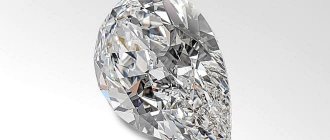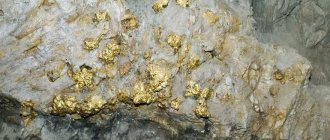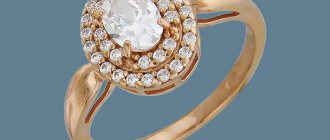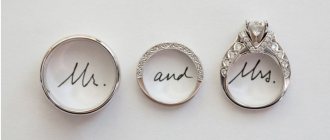Natural marble is one of the most beautiful and sought-after finishing materials. It embodies the color, sophistication and grandeur of nature itself. In former times, decorating a house with marble was the lot of only noble and rich people. Now such luxury, despite its high cost, is available to anyone. As before, marble is a symbol of grandeur and natural beauty.
Peculiarities
Decorators try to highlight gray, white and colored marble in the interior. And the main difference is not only in the color itself, but also in the area of use, in processing methods. White marble is characterized by significant fragility and is unsuitable for outdoor work; there it is used in exceptional cases.
In addition to mechanical disturbances, negative effects due to weather conditions may be detected. This manifests itself in yellowness and the formation of spots.
The gray type of marble is mechanically stronger and relatively easier to process. This material hardly suffers from the weather, so it can confidently be used to decorate both the inside of the room and the façade.
In terms of practical qualities, colored marble is approximately equivalent to gray marble, but is much more aesthetically pleasing, which is why it is more valuable. Such a mineral has a lot of colors, and sometimes it’s not even a specific color that is selected, but the veins of a characteristic type that intersect the stone in different places. Colored marble, like gray, is equally applicable in exterior and interior decoration.
It is worth considering that in any case it is still a “delicate” stone. Products and coatings made from it may not cope even with normal operating conditions. Marble window sills, countertops and even stairs look good, of course. However, they are inferior in wear resistance to their granite counterparts.
Therefore, in most cases, critical areas are covered with granite, and marble is used inside buildings.
According to experienced designers, marble needs to be combined with warm materials. This material is good in moderate versions and designs, especially when it comes to private homes. If there is an excessive saturation of marble products and surfaces, the room looks too cold and no longer seems like a comfortable home.
The polished type of material is sensitive to lighting: if it is selected ineptly, instead of revealing its advantages, flaws are emphasized.
White and gray stone looks quite good in modern interiors, and slabs are ideal for bathrooms.
The magical properties of marble
Marble pendants
The magical abilities and warm energy of marble were appreciated by residents of ancient civilizations (Rome, Greece, Egypt). They decorated homes with it, even built entire houses to live without troubles, in prosperity, peace and harmony. Temples to the gods were built from it, statues of heroes were created, protective amulets and magical paraphernalia were made.
Many of the ancient marble products have retained their charm and properties to this day, which has allowed modern esotericists to draw clear conclusions about the magical power of the stone.
Marble is a symbol of love and family well-being!
It gives a person the opportunity to know true love, protects its owner from infidelity and betrayal, helps to create a family and live happily in it all their lives.
Marble is a home guard!
The stone protects not only family members, but also their home from evil people and any disasters.
Marble is a reliable talisman!
It protects its owner outside the home - from dangers, dark magic, human envy, and so on.
Marble is a source of goodness!
It teaches a person to be more tolerant, softer, kinder, friendlier and more attentive to others, to find compromises and forgive offenses.
Marble is an advisor and mentor!
It helps to find answers to the most exciting questions and solve vital problems.
Marble elements
Marble window sills have become widespread. They are made from natural stone mainly by water cutting. Such products will become a real highlight in any room and will delight the owners with their strength and durability.
The walls are usually decorated with slabs of various shapes and sizes. The crumb is used to form decorative plaster.
There may also be:
- reliefs;
- mantel;
- columns;
- countertops;
- flights of stairs;
- floors;
- flowerpots;
- balusters.
What does it go with?
The combination of marble and wood is a time-tested solution. This approach ensures harmony and a beautiful visual appearance of the composition. Wood should be the “first violin”; stone only emphasizes its advantages. In turn, thanks to wooden surfaces, the marble parts of the composition lose their excessive heaviness and become warmer and more comfortable.
The combination of marble and concrete only seems unnatural, but in fact they look very good together. Of course, if everything is carefully selected. One of the materials creates a feeling of luxury, while the second supports visual associations with the metropolis.
The selection of a combination in a particular case should be carried out by specialists, and very carefully. Most often, polished surfaces are used next to concrete.
It is logical that many people want to combine marble with brick. But, as in the previous case, the help of professional designers is needed here. Often the brick look is given a dominant role. Marble details, accordingly, occupy secondary places. And, of course, you must also take into account your own taste, intentions and material capabilities.
What types are there?
Marble in the interior can be real or simulated. Let's consider the features of each type, the pros and cons of use.
Natural marble
Natural marble is produced in the format of plates, slabs, slabs of various sizes, as well as marble chips. By mixing it with polyester resin you can get a strong tabletop for any purpose. Flexible stone deserves special attention: a modern finishing material that is a thin slice of stone glued to a flexible base.
Another production option is in the form of ready-to-use products: marble countertops, wall and floor tiles, mosaics, sinks. The advantages of natural materials include:
- strength and durability (service life more than 100 years);
- hygiene (bacteria, fungi, mold do not live on the surface);
- resistance to high temperatures;
- beautiful appearance.
Among the disadvantages, in addition to the high cost, is the complexity of processing. It is almost impossible to make a product from this stone yourself.
Imitation marble
Imitation stone is available in completely different formats and materials. General advantages of “counterfeits”:
- Various colors. In addition to natural natural tones, it can be quite unusual: pink, burgundy, blue.
- Ease of processing. PVC is cut with a regular knife, tiles are cut with a special one - but even this can be laid on the walls or floor with your own hands.
- Profitable price. Any material that imitates texture is cheaper than the original. Therefore, the decision to add marble to the interior will not be expensive.
Advantages and disadvantages
External attractiveness and unique texture are not all the advantages for which buyers value marble in a modern interior. Its main advantages include:
- Resistant to constant loads. Durable coating will remain reliable and stable for many years, even in high-traffic areas;
- Thermal conductivity. In a room with a marble floor you will feel comfortable, as you can install electric heating under the stone flooring;
- Soundproofing. A marble wall in the interior of a living room, bedroom or kitchen blocks most street noise, which is especially important for houses located near busy highways;
- Insensitive to humidity and temperature changes. An important quality when cladding rooms with difficult operating conditions;
- Ecological cleanliness. The absence of harmful components in the breed makes it possible to safely design the environment in medical and children's institutions;
- Breadth of use. Stone can be used for a variety of purposes, from flooring to window sills and mirror frames.
Natural marble in stylish home decoration. Examples of using.
The disadvantage is, first of all, the high cost and complexity of installation. The surface also requires regular careful care and does not tolerate aggressive household chemicals or acid-containing products.
ADVICE. Another disadvantage is the significant weight of the coating. It becomes especially important when there is a need to monitor the load on walls or floor slabs.
Ceramic tiles and porcelain tiles
Decorating rooms with marble-effect tiles is a classic solution that will fit into any interior and fit into any budget. In construction stores there are many options for decorative coatings: from economy to luxury class.
Compared to natural white marble, tiles are less durable - but their wear resistance is often more than enough for decorating residential premises. Another drawback is the seams between the elements of porcelain stoneware or tiles. But if the work is done well, they should not be noticeable.
Decorative plaster
It is surprising that this wall material is rarely used: glossy Venetian plaster is seamless, durable, and has an unsurpassed visual resemblance to natural marble.
But you need to trust the imitation of marble in the interior with the help of plaster to a professional: only a worker with extensive experience will be able to create a unique accent wall.
Wallpaper
The easiest way to fit stone into the interior of the living room is with wallpaper: high-quality gluing joint to joint will create a seamless surface in the right place. Wallpaper can be standard: non-woven or vinyl, or self-adhesive. The latter are not afraid of water and are easy to clean.
PVC panels
Budget plastic panels are weakly associated with the concept of “luxury” inherent in marble. But if the task is to decorate a bathroom on a budget, they are perfect! You can find various shades on sale: pink, blue, beige gray. And also textures: imitation of tiles, sheet stone, etc.
Laminate
This material mainly imitates wood, but in the collections of manufacturers you can also find expensive stone textures. For example, a selection of Impressive Patterns from Quick Step featuring marble tiles.
Linoleum
Rolled marble flooring is even less common than laminate flooring. Dark color options are available in stores, mostly commercial grades - because... Marble is very popular in office and retail spaces.
MDF panels
Wall panels are a ready-made option for finishing a kitchen apron and other vertical surfaces. Most manufacturers produce the same motifs on panels and countertops, so when ordering a kitchen you will not have problems with one surface not matching another.
Origin and education
According to scientists, marble originated as a result of metamorphism. Metamorphism is the reproduction of rocks from minerals from the thickness of the earth's layers. They are created by nature. The hardness of the mineral has been preserved, and the water resistance has become many times greater.
Stone quarries operate in different parts of the world and country. The mineral marble was created over billions of years, from late volcanic eruptions of lava and deposits of ash covered with water. Scientists have not proven another place of formation. The stone was formed from a hydrothermal vein at low temperatures. On the surface of the earth layer, weathering occurs and the formation of carbonate, clayey rock content occurs.
Marble is one of the elite 5 minerals of the World. There is nothing more elegant in beauty and sophistication that nature has created. The stone is removed. Stone is extracted from mines industrially at a decent depth. The unique beauty of the appearance of the marble mineral was created over centuries in the thickness of the earth.
Crystallization took place many centuries ago. And it is still unknown who 1 found this mineral and applied it on earth with its characteristic features to create and create interiors and unique designs.
The marble mineral contains inclusions of dolomite, calcite, products of decomposition and transformation of calcium, magnesium. The names of stones began to come from these minerals: dolomite, calcite. Although the name does not give reason to believe that the stone is not 100% or even 60% composed of these minerals.
What color does it come in?
Most often you can see the use of white marble in the interior. A light base, gray veins - this is exactly what comes to mind when you hear the word “marble”.
- The second most popular is beige. It looks more gentle in comparison with the first option, creates a warmer atmosphere. The fact is that the high temperature of the shade extinguishes the coldness of the stone.
- Black marble closes the TOP 3. The dark shade helps in creating interesting compositions: it goes well with both light stone and other textures.
Less popular, but therefore more exclusive, are color solutions. Green is associated with malachite, as well as classic-style cabinets. Brown is a warm black that goes well with beige. Blue, pink, burgundy, lilac are used to highlight accents.
Varieties
It is known that the shade of gems and the design are influenced by impurities of chemical elements. Marble is distinguished by its diversity and each variety is remarkable in its own way.
White
The calcareous rock formation with the least amount of impurity is white. In this variety, the design has a colored line. This mineral is often used to make exquisite decor, figurines, and sculptures.
Black
A mineral of this color is formed as a result of the transformation of igneous rocks and is quite rare in nature. Graphite and bitumen color the mineral dark. The most expensive specimens have gold inclusions and are used for decoration.
Green
Iron, which is part of the chemical composition of marble, gives the mineral its amazing green color. The pattern is formed by brown or white patterned lines. Thanks to their shade, these types of marble are popular among craftsmen.
Red
The most ancient finds of marble have a reddish tint. Many ancient buildings are decorated with panels in this color. A room decorated with such a mineral acquires a touch of officiality and a festive atmosphere.
Grey
Marble of a noble shade, having a coarse grain, is easy to grind, polish and granite. The gray shade maneuvers from light to dark tone. There may be inclusions that give a pinkish or yellowish tint.
Beige
Limonite and manganese influence the intensity of the beige shade. This specimen is highly durable and is used for making floors.
Pink
Marble of a romantic shade is formed thanks to iron oxide. This material is widely used in the manufacture of various crafts that decorate the home, for amulets and decorative elements.
Light blue and blue
The effect of diopside on the composition gives the mineral a blue color, the saturation of which depends on the content of the element in the rock. The deep, magical shade ranges from intense blue to violet.
Yellow
The beige tint mixed with gold gives the gem a delightful yellowish tint. Material of a similar shade is used in the manufacture of tiles, countertops and other decorative elements.
Brown
This shade of the gem is achieved due to the content of iron, manganese and limonite. The dark chocolate-colored stone is very attractive and popular among stone experts.
What can be trimmed?
Marble on the floor in the interior is a sign of good taste and high income. It looks stylish, goes well with any materials, and never goes out of style. In the kitchen, bathroom, and hallway, it is better to lay natural stone, tiles, and porcelain stoneware. There is enough laminate and linoleum in living rooms, bedrooms, and corridors.
- Walls decorated with marble are good not only in bathrooms: a marble TV section in the living room is appropriate not only in the Baroque style, but also in a modern interior.
- When zoning the space, it is not necessary to make tall static screens invisible (made of glass) or to match the finishing of the remaining walls. Highlight it with marble if you want to draw attention to the partition.
- Column - such an architectural element also does not have to be hidden: put it in the foreground by covering it with marble tiles and additionally highlighting it.
- Another architectural detail - a niche requires special attention: to complement the recess in the interior, take imitation marble as a basis: install lighting inside or install shelves.
- In private homes, the fireplace is considered the central element of the living room, so it should be not only functional, but also beautiful. Order a marble structure or cover an already finished one with stone.
- Arches, thresholds, boxes do not have to be wooden: in some styles, marble will be more appropriate for doorways.
- Marble finishing will help you turn ordinary window or door slopes into an interior highlight: MDF panels, tiles, and flexible stone are best suited for this.
- An expensive marble window sill does not require additional decoration: you can even refuse curtains so as not to block this luxurious element of the interior.
- A marble apron will provide protection from splashes of water and grease, as well as a stylish appearance of the kitchen set. To implement the idea, tiles, porcelain stoneware, and MDF panels are suitable.
Marble and interior styles
Marble stone is considered a universal finishing material, suitable for any design of a city apartment or country house. Due to natural sophistication and gloss, unique compositions are created, filled with play of color shades and halftones.
Marble fits into any interior composition, from the ultra-modern high-tech style, diluting the strict realm of glass and concrete, to the romantic Empire style and elegant Rococo.
In what style can it be used?
Initially, marble was considered an element exclusively of palace styles: baroque, art deco, classic.
Today it has found its place in minimalism, advanced high-tech and even oriental wabi-sabi.
But you can find marble details anywhere. Designs in neoclassical, scandi, modern, loft styles often include marble floors, bathroom walls or countertops.
Practical use of marble in the interior
The practical use of marble can be considered using specific examples, where natural marble looks most advantageous against the background of modern design.
Kitchen
In the kitchen space, marble stone will be an excellent choice for decorating the work surface. Marble glossy countertops, kitchen decorative aprons, window sills, hanging decorative shelves, wall panels in the dining area look elegant and presentable.
The combination of marble and wood from which the kitchen furniture is made emphasizes the natural beauty of these natural materials and recalls their common natural origin.
- In addition to the external unique beauty and high quality, the durability of marble surfaces should be noted. With proper care, marble cladding retains its pristine beauty for many decades.
- You can often find polished marble floors in kitchen areas. In a classic style or modern modern interior, such flooring organically fits into the overall concept of the chosen interior direction.
- When using marble in the kitchen, you should not forget about the main functional purpose of the kitchen - it is a room for preparing food, and therefore the issue of caring for the marble coating becomes the most pressing.
- Typically, marble products are treated with special means to protect them from premature abrasion and external influences. They are made from environmentally friendly materials and are absolutely harmless to humans.
Bathroom
Natural stone marble is used for cladding wall surfaces and as flooring. Due to the velvety texture and glossy shine of polished marble, a refined, noble atmosphere is created in the room, and the color tints of delicate pastel tones visually expand the boundaries of the room.
- Typically, one type of marble stone is used to decorate a bathroom. In this case, to dilute the boring monotony, various methods of laying stone on the walls are used: marble slabs are laid using the French herringbone method in the form of a mosaic covering, or simply change the directions of the pattern and design of the tiles.
The latest fashion trends in creating stylish interiors allow deviations from generally accepted canons and suggest using marble stones that match the tone in the decoration of bathrooms, for example, the walls are finished with beige marble with brown veins, and the flooring is made of marble in brown tones.
- From a practical point of view, the best choice for cladding bathroom walls would be white marble or a light gray shade - traces of moisture droplets are not visible on such a surface, which means there is no need to constantly clean the walls.
- To fully reveal the natural beauty of the marble coating, designers recommend finishing the entire bathroom wall, preferably the front wall, with marble.
Living room
Marble in the living room is used for decorative wall decoration, fireplace area arrangement and flooring.
Since the whole family gathers in this room to relax, and guests who come to the house are brought here, the interior should not only be modern and beautiful, but be comfortable and practical.
- Even if only one marble detail is installed in the living room, this decor raises the interior to a completely different level. An example would be an ordinary coffee table, which successfully combines marble and wood; in this case, an ordinary piece of furniture will turn into a real highlight, decorating a standard living room furniture set.
- Happy owners of a fireplace area in the living room can be advised to line the fireplace with decorative marble elements, which will give the room an elegant look of sophisticated luxury.
Bedroom
When deciding to use stone cladding in the sleeping area, you need to carefully weigh all the pros and cons of such an intention. A hard, cold coating can make the room feel less than comfortable. Soft, textured home textiles, delicate lighting, as well as the right combination of marble and warm wood in the interior will help solve the problem.
Corridor and hallway
Marble in the hallway in the form of a picturesque mosaic panel, tiles with ornaments or a monumental staircase will cause genuine delight among household members and guests. And even if you decide to use composites based on resin, gypsum or concrete, styling it with a trendy natural material will make your home much more elegant and status-worthy.
The most effective techniques for processing marble
Among the high-tech methods of cutting marble, waterjet and diamond cutting enjoy a good reputation. Their main advantages are safety for craftsmen, ease of execution and high-quality results.
Waterjet cutting
Professionals who choose how to cut marble often prefer this method. It is based on the use of an aqueous solution, which includes special abrasives. The mixture is supplied under high pressure; no dust is released during the process - it is washed away by the liquid. The technology imitates natural erosion - the destruction of stones under the influence of water.
Pros:
- high accuracy;
- formation of an absolutely smooth edge in the absence of chips and cracks;
- convenience for artistic cutting;
- absence of thermal effects that negatively affect the strength of the material;
- minimizing waste;
- safety;
- the ability to create pieces of different fractions and thicknesses;
- decent cut quality.
Minuses:
- slowness of impact;
- high cost of work.
Waterjet cutting of marble
The tools used to perform this type of processing have limited functionality.
Diamond cutting
The technique is effective and widespread; it forms perfectly smooth edges of the material. The discs are able to cope with the strongest rocks, including granite. Diamond cutting can be dry or wet. In the second case, the dust does not settle in the air, but is immediately washed off, which is safer from the point of view of hygiene of the work space.
The discs have a direct impact on the material, and diamond coating can be applied to individual areas (on the surface of the teeth, in particular) or to the entire working area. The stone is gradually crushed, which prevents it from cracking or breaking.
Pros:
- high speed of completion of work;
- cutting accuracy;
- low noise level in the process;
- high efficiency and effectiveness;
- the material does not deteriorate, as cracks and chips do not appear.
Minuses:
- only a straight path is available;
- the cut line needs secondary processing.
Diamond cutting of marble
Another significant drawback is the impossibility of processing the enameled structure of the stone, since cracking is inevitable during its cutting.
Rules of care
Interiors with marble floors and walls made of this stone have a very impressive appearance, to maintain which you must adhere to certain rules:
- do not use acid-containing household chemicals when cleaning a living room with a marble floor;
- abrasive powders and cleaning creams are prohibited;
- immediately remove stains from spilled liquid, otherwise the floors will quickly lose their presentability;
- white marble stone can be damaged by excessive ultraviolet radiation, so it is recommended to create twilight in the room;
- traces of fat are neutralized with ordinary alcohol;
- Rust can be removed only with professional products.
ADVICE. The cladding will be bright and expressive if it is treated in time with special wax polishes. Clean yellowed areas with a mild soap solution or a drop of hydrogen peroxide. Follow these instructions to ensure the surface remains as neat as the day it was installed.
Design tips
In conclusion, here are some secrets from experts that will help you use marble correctly in design:
- For those who want to save money, we recommend decorating your apartments with Venetian plaster. This type of cladding creates a decent imitation of stone, while being much cheaper than its natural counterpart.
- In a city apartment, marble stone is often appropriate in small doses: in the form of a floor vase, a shelf or a coffee table in the living room, which does not clutter up the space.
- It is important to choose the right wallpaper for the marble floor. Combining a dark marble floor with a light wall covering will help balance the color balance and make the room lighter.
- A marble interior is an expensive pleasure that requires care and attention. However, a kitchen, bathroom or living room in marble looks really amazing and trendy.
ADVICE. To determine the amount of material, look at photos and projects in which this stone is used. This will make it easier to choose the appropriate way to decorate rooms in marble style. Study the photo of the wall decoration, pay attention to the consistency of the material with the internal filling, as well as the color and texture combination with other finishes.
What kind of furniture, decor and other home products do they make?
Most often, a layer of natural or artificial stone replaces a countertop: in the kitchen in the work area, dining table, coffee table, console in the hallway. Stone is characterized by durability and ease of maintenance, so it is indispensable as a base for tables.
Marble is used less often for furniture facades - but we have to admit that cabinets with “marble” doors look impressive!
Vases, flowerpots, figurines and other small details made of marble are a wonderful accent for any space.
If there are no free horizontal surfaces, marble decor is hung on the wall: in the form of a clock, picture frames or mirrors, panels.
Imitations
In some cases, a justified solution would be to turn to an imitation marble surface. This is a logical choice if natural stone is not suitable for its high cost, complexity of installation or significant weight.
The most popular options:
- fake diamond;
- porcelain stoneware imitating marble pattern;
- stylized ceramic tiles.
Modern manufacturers also offer wallpaper with a pattern that imitates a natural stone covering: we are talking about “marble wallpaper,” which literally took over Pinterest and popular interior blogs a few seasons ago. This is wallpaper that imitates the pattern of stone, but at the same time it weighs like a feather, compared to real marble slabs.
This finish is much more affordable compared to natural coating.
This finish also has its drawbacks: it is much less durable, not as strong, and most often not suitable for decorating wet areas. Marble wallpaper will look best in a contemporary, minimalist, Scandinavian, or modern style setting.
You can cover the entire room with them or make just one accent wall to highlight some part of the room: for example, the headboard in the bedroom or the dining area in the living room.
ADVICE. It is worth choosing the highest quality material so that the stone imitation looks like a justified imitation, and does not look like a budget fake.
Marble stone: description, texture, features
Of all types of natural stone, marble is one of the most decorative. Since ancient times, people have appreciated both its beauty and its ductility to mechanical processing. Therefore, palaces and temples were built from marble, statues were sculpted, carved decorations, fountains, tombstones, and steles were made. We usually imagine marble as white, like ancient sculptures and temple columns. But there are a great many varieties of marble. There is black, red, and blue marble, some that are almost uniform in color and pattern, and some with contrasting veins and spots. In the decoration of buildings and interior design, marble creates an atmosphere of solemnity, luxury, dazzling brilliance and purity. At the same time, most common shades of marble are not cold, sterile-icy, but warm, organic, with a soft, vibrant shine. This combination of an amazing variety of colors with amazing beauty and successful mechanical properties makes marble one of the most popular finishing materials in the history of mankind.
Description of marble
What kind of stone is marble from a specialist’s point of view? By origin, it is a metamorphic rock - the crystalline structure of marble formed in the depths of the earth under the influence of colossal pressures and temperatures. To simplify, we can say that marble is transformed limestone, which has received greater hardness, density and beauty of design.
Marble texture
A unique feature of marble, by which it is always easy to recognize, is its peculiar granular-layered texture, which gives a characteristic pattern of veins and spots on a polished cut: contrasting or subtle, depending on the type of marble.
Combination with wood
The natural origin of natural stone and wood make it possible to effectively use marble and wood in the interior, creating harmonious and interesting interior compositions.
In the “marble + wood” tandem, the dominant accent is created by wood, and natural stone emphasizes its natural beauty. Wood miraculously softens the heaviness of marble and creates an atmosphere of warmth and comfort in the room.
Marble in a modern interior emphasizes the fashionable desire for space and minimalism. And if you combine them correctly, you can give the room an unusually stylish and harmonious look.
Jewelry with mineral
There are many marble decorations on the world market that are worthy of decorating the most sophisticated interior. As an example, a list of products and decor made from high-quality natural minerals is provided.
- desk set: pen, copper clock on a green marble stand costs $38;
- a marble vase 42 cm high is offered to buy for $80;
- an original green mineral fruit bowl sells for $930;
- pink marble heart-shaped desk clock price: $55;
- marble and bronze candelabra $1,300 per pair;
- a marble and bronze mantel clock costs $1,900.
Also read: Ammonite - a source of ancient magic
There are offers to purchase a natural, unprocessed specimen, which is adjacent to other stones. For example, a massive fragment of marble with ingrown rock crystal crystals costs $35.











